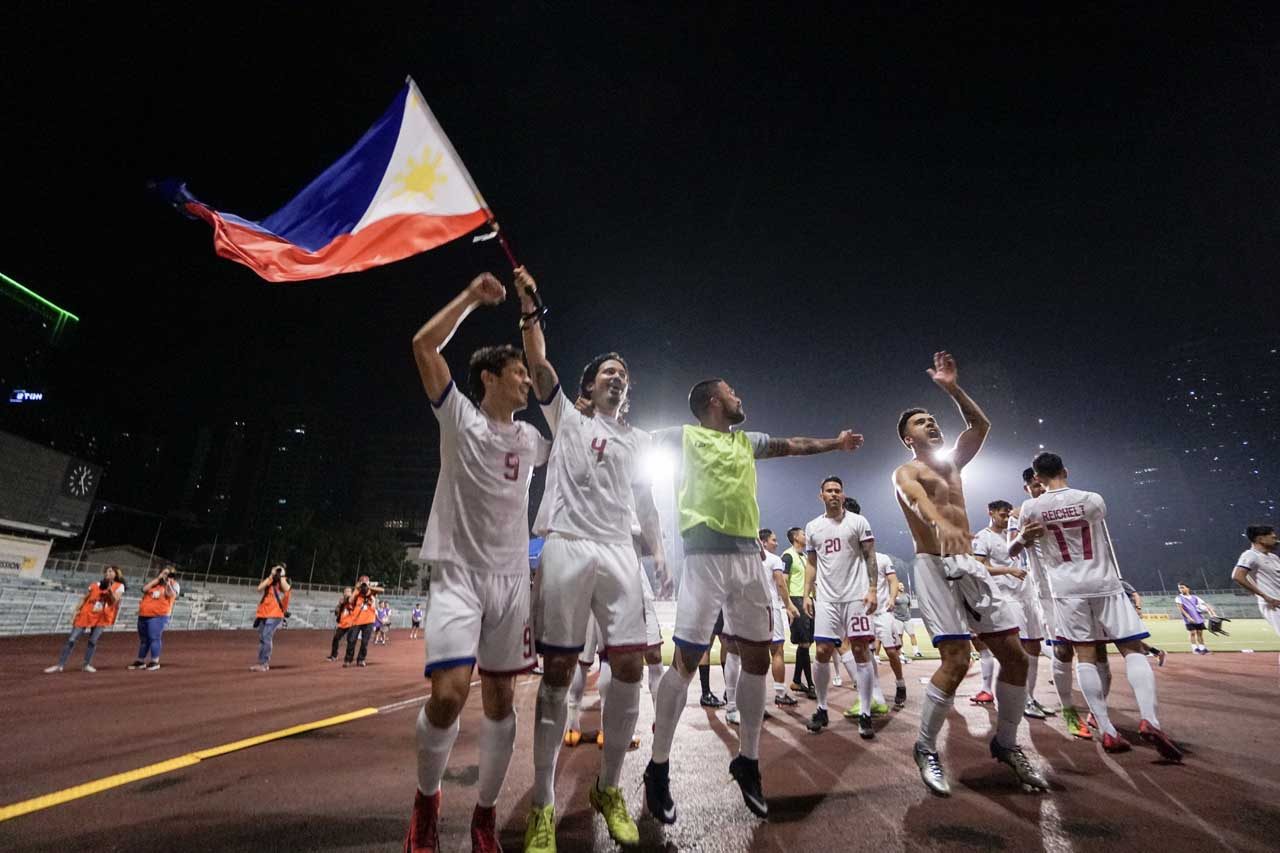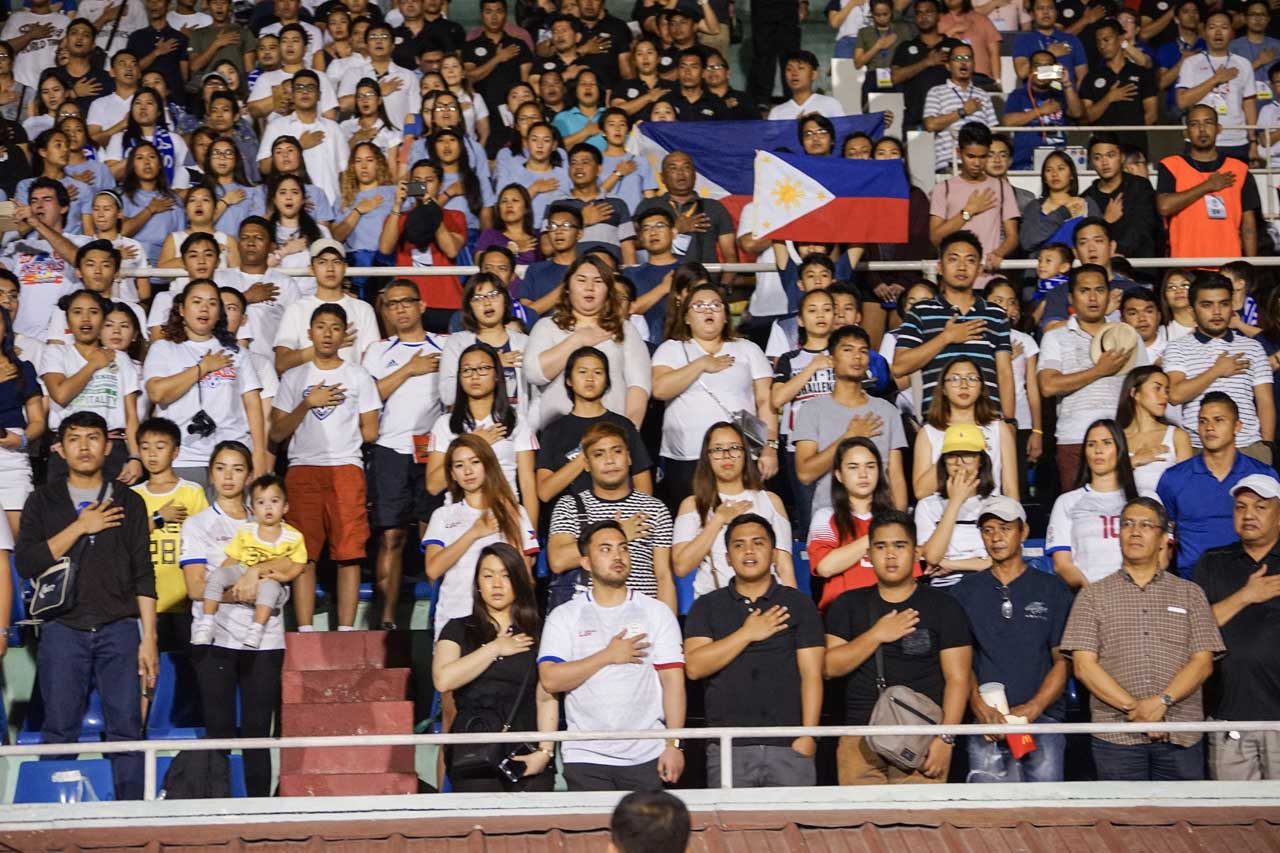SUMMARY
This is AI generated summarization, which may have errors. For context, always refer to the full article.

MANILA, Philippines – It was an uncommon scene in Philippine football. Families, friends and even plain fans cheered as the Philippines defeated Tajikistan, 2-1, to reach the AFC Asian Cup after almost 60 years of participating in this premier regional team event.
The Rizal Memorial Football Stadium, where many hopes were born only to be quashed by reality over many decades, teemed with joy after the referee blew the final whistle. It was if the Philippines had won the Asian Cup itself and that football at last arrived as a marquee sport in a basketball-mad country.
(READ: Philippines 2, Tajikistan 1: Postgame thoughts on a perfect night for Pinoy football)
For in the Asian Cup, if one goes through stats, the list of routs are so deep and one can count how many times the Philippines scored in international competition.
A day after the victory, some realism had begun to seep in. Can the momentum be sustained? Can this finally inject some life into the Philippines Football League, a home-and-away event with 6 teams?
No one knows for in Philippine football’s history, the country has shown an inability to sustain momentum. Reaching the quarterfinals of the 1958 Asian Games resulted in mayhem after 1961, when sports officials persisted in implementing a rule where a football team must have a 60% Filipino lineup and 40% foreign. This forced the local Chinese teams, majority of whom were Philippine-born but had to secure naturalization papers to leave football. It hurt that the Chinese clubs were numero uno. After two years, the Chinese side agreed to rejoin and resumed its winning ways until the late 1960s when a younger generation of footballers arrived.
In the 1991 Southeast Asian Games, the Philippines stunned Malaysia. People streamed into the pitch, hugging players and friends as the team went on to reach the semifinal, its best achievement. Once more, the momentum faded.
The Azkals phenomenon, now on its 8th victorious year, is the longest successful performance of a national side abroad. Yes, there are more skillful players than in the 1960s. Interest is much better, as football fans can also have their fill of international matches due to cable TV.
In the UAAP, standing out are Jarvey Gayoso of Ateneo, the grandson of former football and basketball great Ed Ocampo, Kintaro Miyagi of UP and La Salle goalie Paeng de Guzman. But after the collegiate wars, will there be a second division league to sharpen them and other rising stars?
Hopefully someday
— Jarvey Gayoso (@JarveyGayoso) March 27, 2018
The bar was raised higher in the Philippines as only a performance such as the Azkals could make Filipinos think twice before changing their TV channel to basketball. On Sunday, the women’s team travels to Jordan for the Asia Women’s Cup’s Group A match. They play the home side, Jordan, first then China and Thailand. The old mantra is invoked: fight and make sure you score and keep it close for interest may be affected if the national team is routed.
Thomas Dooley, the Azkals coach, has done a lot to keep the team as fit as possible. Some players disagreed with his policy and left. For the Tajikistan match, injured were Amani Aguinaldo and Stephen Palla but Carli de Murga and Patrick Reichelt were recalled.
Although his contract has yet to be renewed, Dooley’s stay as coach is still up in the air. Longer preparation for the Suzuki Cup, where the Philippine football team showed its mettle in 2010, is needed.

This year is crucial for Philippine football. It must retain its attraction by winning matches. The best boost is always the national team. When it wins, fans increase and hopefully more kids will be drawn to play football.
Philippine football has come a long way from those years where national sides would go home routed and goalless. A hope is that subsequent wins will finally unite those supporters of football to sustain this performance.
One prays for the same effect produced by West Germany’s first World Cup victory in the 1954 in Berne, Switzerland against the heavily favored Hungarian team portrayed in the film The Miracle of Berne. The triumph raised the Germans’ spirits. A stirring performance could do the same for us. – Rappler.com
Add a comment
How does this make you feel?
There are no comments yet. Add your comment to start the conversation.